As the sun set in Japan on August 8, 1940, a colossal silhouette was slowly emerging from the dry dock of Kure Naval Yard.
Towering over everything else, it was an awe-inspiring sight that reflected Japan’s ambitious naval dreams during the Second World War.
This was the mighty battleship Yamato, the largest and heaviest battleship ever constructed, and a symbol of Japanese naval might and technological prowess.
Design And Construction Of The Yamato
The Yamato was conceived in the late 1930s when Japan had already withdrawn from the League of Nations and was preparing for potential conflict with the West.
The Japanese Navy felt a pressing need for a superior battleship, one that could engage multiple enemy battleships at the same time. Yamato’s design was born from this strategy, the underlying philosophy being that quality would trump quantity.
The keel of the Yamato was laid down at the Kure Naval Arsenal in November 1937. To keep the construction of such a mammoth ship a secret was a significant challenge.
It was built in a dry dock, hidden from prying eyes and aerial reconnaissance by a network of ropes, bamboo, and cloth screens.
The Yamato’s design was a marvel of engineering, emphasizing both firepower and protection.
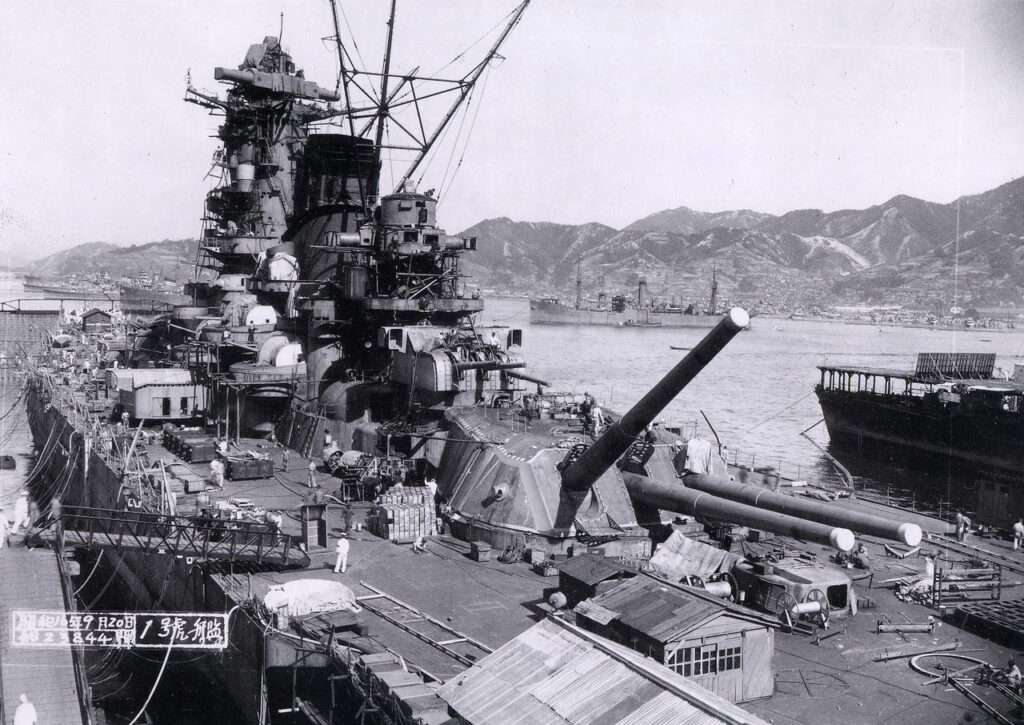 The Yamato under construction, September 20 1941.
The Yamato under construction, September 20 1941.
With a length of 263 meters and a width of 38.9 meters, the Yamato was significantly larger than any other battleship of its time.
Its water displacement of 72,800 tons at full load was nearly 20% greater than that of the Iowa-class battleships, the largest of the U.S. fleet.
But the real marvel of the Yamato lay in its armament. Its nine 18.1 inch (46 cm) Type 94 naval guns, the largest guns ever mounted on a warship, were arranged in three triple turrets. Each of these guns was capable of firing high-explosive or armor-piercing shells over 42 kilometers.
 One of the huge 18 inch shells!
One of the huge 18 inch shells!
They were complemented by an array of secondary and anti-aircraft guns, making Yamato a formidable adversary for any opponent.
Despite its immense size and firepower, the Yamato was also designed for speed. Its bulbous bow design reduced hydrodynamic drag, enabling the battleship to reach a top speed of 27 knots.
Four steam turbines, generating over 150,000 horsepower, powered four massive propellers, each measuring over six meters in diameter.
Protection was another area where the Yamato stood out. Its main belt was 410mm thick, inclined to increase the effective thickness against horizontal and plunging shots.
The main gun turrets were protected by armor up to 650mm thick, and the deck armor ranged from 200mm to 230mm. This comprehensive armor protection scheme was designed to protect the Yamato against the heaviest shells and torpedoes.
However, the construction of the Yamato was not without its challenges.
Due to the ship’s immense size, standard construction techniques couldn’t be employed. The Japanese had to develop new methods and tools for construction, and the workforce had to be trained to use them. Moreover, procuring enough resources for its construction was a challenge in itself.
The Yamato was finally commissioned into the Imperial Japanese Navy on December 16, 1941.
It represented the pinnacle of naval technology and a significant investment of resources. However, as events would soon prove, its impressive specifications could not prevent the radical shift in naval warfare that was on the horizon.
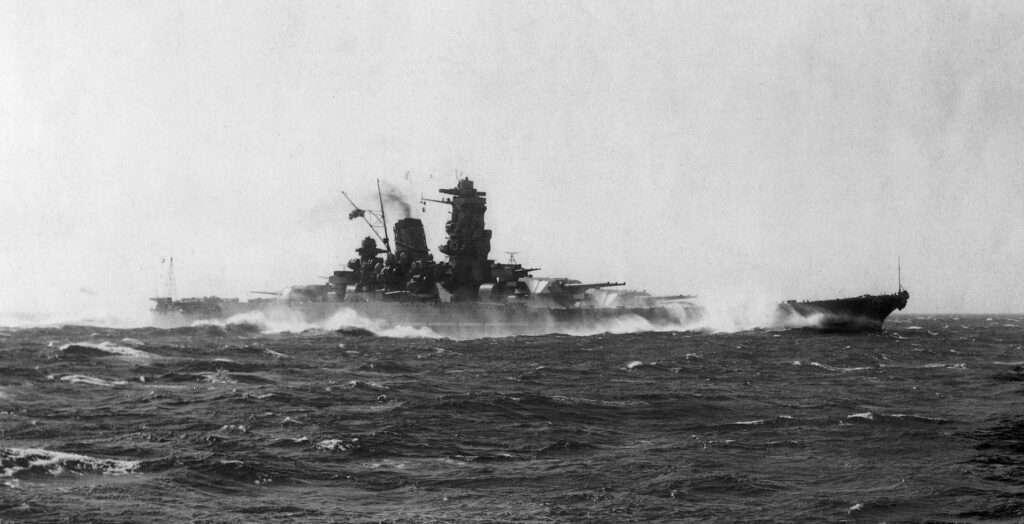 Yamato undergoing trials off the Bungo Strait, October 20 1941.
Yamato undergoing trials off the Bungo Strait, October 20 1941.
Which Battleships Had 18 Inch Guns?
The Japanese Yamato and Musashi have the honour of being the ships with the largest guns mounted on them. In fact,18 inch is the upper limit of guns mounted on ships so far. Though the ships would never fire their guns, they packed some incredible power.
In particular, their shells weighed over 3000 lbs and could fire at targets 27 miles away. Despite these impressive features, the Yamato and Mushashi ships were sunk in 1944 and 1945 by Allied forces.
Operational History Of The Yamato
Despite her impressive design and construction, Yamato’s operational history was paradoxically limited and uneventful, reflecting the changing tide of naval warfare in World War II.
Once commissioned, the Yamato was designated as the flagship of the Combined Fleet under Admiral Isoroku Yamamoto.
She left the Kure Naval Arsenal for the first time in February 1942 and spent the next few months conducting training exercises and getting equipped with additional weaponry.
Yamato’s first mission was during the Battle of Midway in June 1942. However, her role was primarily symbolic, acting as a deterrent force against a possible incursion by the American fleet into the inner defensive perimeter of Japan.
The main battle was carried out by aircraft carriers, underlining the shift from big-gun battleships to air power as the dominant force in naval warfare.
The Yamato never fired her main guns at enemy vessels during this battle.
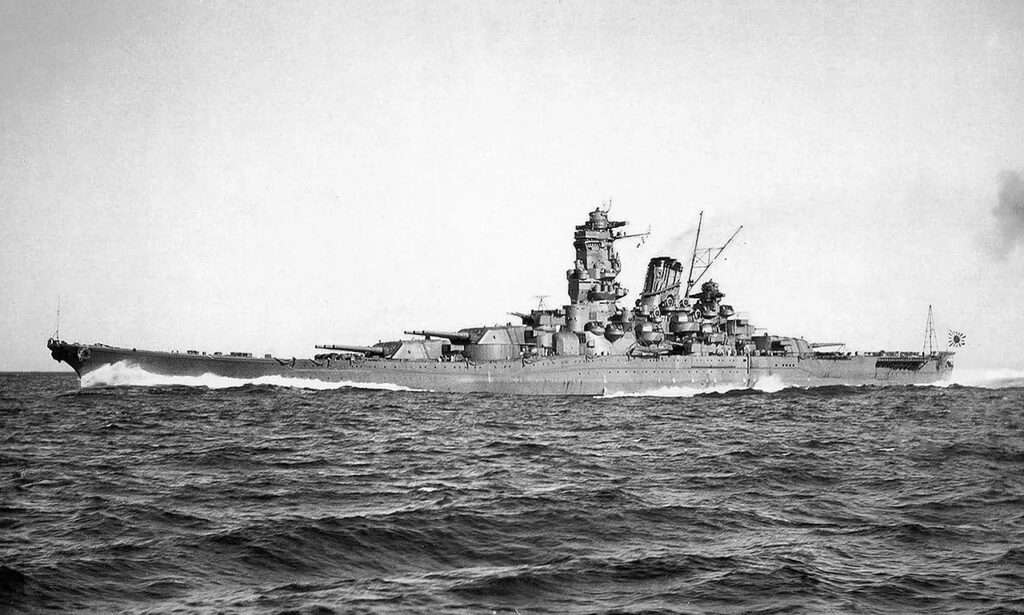
The Yamato pictured in 1941.
In late 1942, Yamato was transferred to Truk, a Japanese base in the Caroline Islands, to deter Allied forces from advancing towards the Japanese home islands.
But again, the fear of losing such an iconic ship kept her mostly in safe waters.
In the latter half of 1944, during the Battle of Leyte Gulf – one of the most significant naval battles in history – Yamato played a more active role. She served as the flagship of Vice-Admiral Takeo Kurita’s Center Force.
However, she saw minimal action as the battles of the Sibuyan Sea and Samar were dominated by aircraft carriers and submarines.
While Yamato did manage to engage enemy ships at Leyte Gulf, her impact was minimal, and she failed to sink any enemy vessels.
Worse still, Kurita, in a controversial decision, ordered a withdrawal just when it seemed the Center Force could inflict severe damage on the American landing forces. This further limited Yamato’s contribution to the battle.
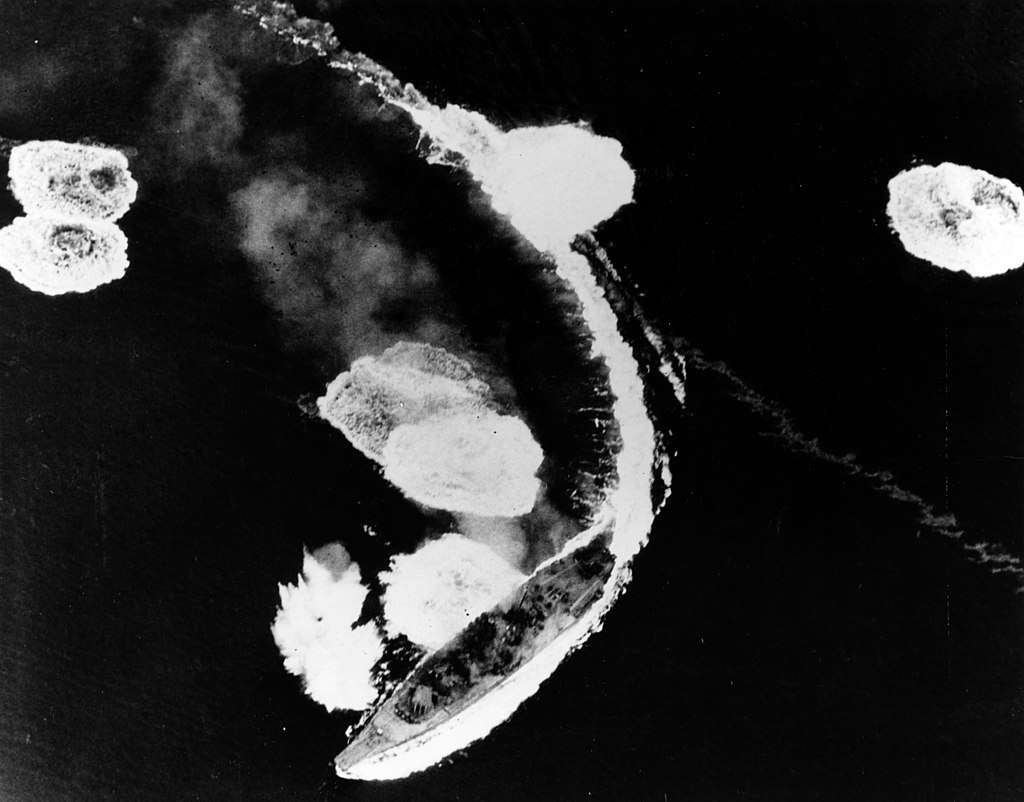
After Leyte Gulf, Yamato returned to Japan, where she was effectively stranded due to the acute shortage of fuel in the country by late 1944.
Thus, the operational history of the Yamato was one marked by hesitancy and underutilization. The irony was not lost on observers – the world’s most giant battleship, embodying Japan’s naval power and imperial aspirations, spent most of its life hiding from the enemy.
Yamato’s Final Mission
The Yamato’s last mission, Operation Ten-Go, marked a desperate and poignant phase of World War II for Japan. Understanding the gravity of this mission requires a look at the broader context of the Pacific War.
By the spring of 1945, the Allies had pushed Japan back on all fronts.
The island of Okinawa, only 340 miles from the Japanese mainland, was the next strategic target for the Allies. If Okinawa were captured, it would provide the Allies a base for the final assault on Japan.
The Imperial Japanese Navy, aware of the importance of Okinawa, decided to use the remaining naval vessels, including the Yamato, in a desperate counter-offensive.
In what was essentially a suicide mission, the Yamato, along with a small fleet consisting of one light cruiser and eight destroyers, was to sail to Okinawa and attack the Allied forces.
The Yamato was expected to beach herself on the coast of Okinawa and fight until destroyed, serving as an unsinkable gun platform and fortification.
However, the plan was heavily flawed – the Yamato was given only enough fuel for a one-way trip, and the force lacked significant air cover, leaving it vulnerable to attacks from Allied aircraft.
As the Yamato and her fleet moved towards Okinawa, American submarines spotted them, and their course was relayed to the American fleet.
On the morning of April 7, 1945, over 300 American carrier-based aircraft swarmed towards the Yamato in successive waves. With limited anti-aircraft capabilities and no air cover, the Yamato was a sitting duck.
The American aircraft targeted the Yamato with bombs and torpedoes, striking her repeatedly.
Despite taking significant damage, the Yamato managed to stay afloat for a couple of hours, her crew working desperately to counteract the flooding.
However, by mid-afternoon, with the waters of the East China Sea pouring into her hull through multiple torpedo holes, the Yamato capsized.
At approximately 14:23, a massive explosion rocked the Yamato, likely caused by the ignition of her main magazines.
The explosion was so massive that American pilots reported columns of smoke rising miles into the sky, and the shock wave almost capsized a nearby destroyer.
With that, the Yamato, the pride of the Japanese Imperial Navy, sank beneath the waves, taking with her over 3,000 crewmen.
The sinking of the Yamato was a massive blow to Japanese morale and marked the end of the era of battleships.
Its one-way mission and subsequent sinking highlighted the desperate situation of the Japanese Empire in the closing months of World War II.
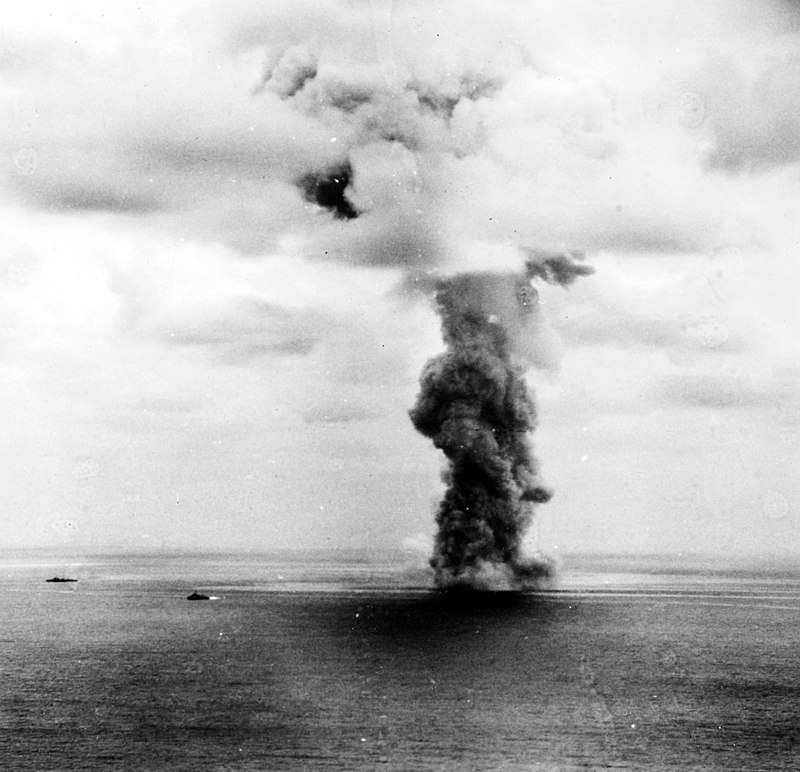 Explosion from the Yamato.
Explosion from the Yamato.
Legacy
The Yamato, in her size and firepower, represented the pinnacle of battleship design. However, her short and tragic service life reflected the end of an era.
By the time of her commissioning, the era of battleships was ending, making way for the age of carrier-based naval warfare.
Today, Yamato is remembered as a symbol of Japanese naval power and engineering innovation.
In terms of military history, the Yamato is symbolic of the high point of “battleship era” naval warfare.
It represented the apex of battleship design and firepower, armed with 18.1 inch guns that are the largest ever mounted on a ship.
The Yamato demonstrated the vulnerability of even the most heavily armored battleships to air attack.
This was a pivotal lesson learned during WWII, leading to the domination of aircraft carriers in subsequent naval doctrine worldwide.





